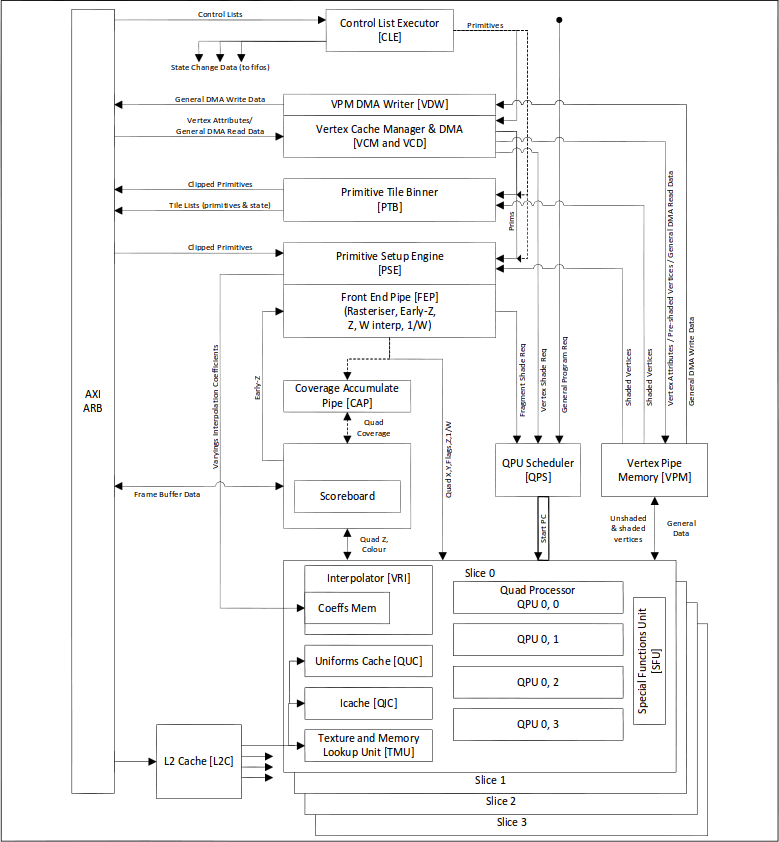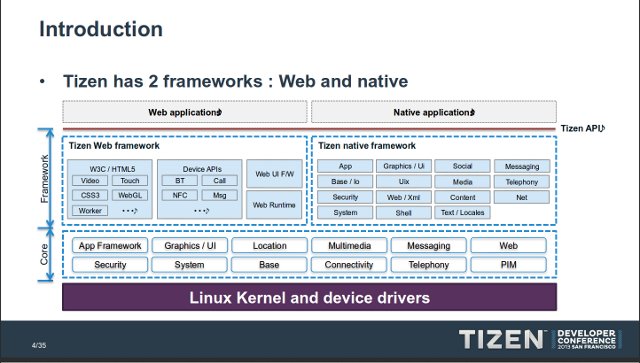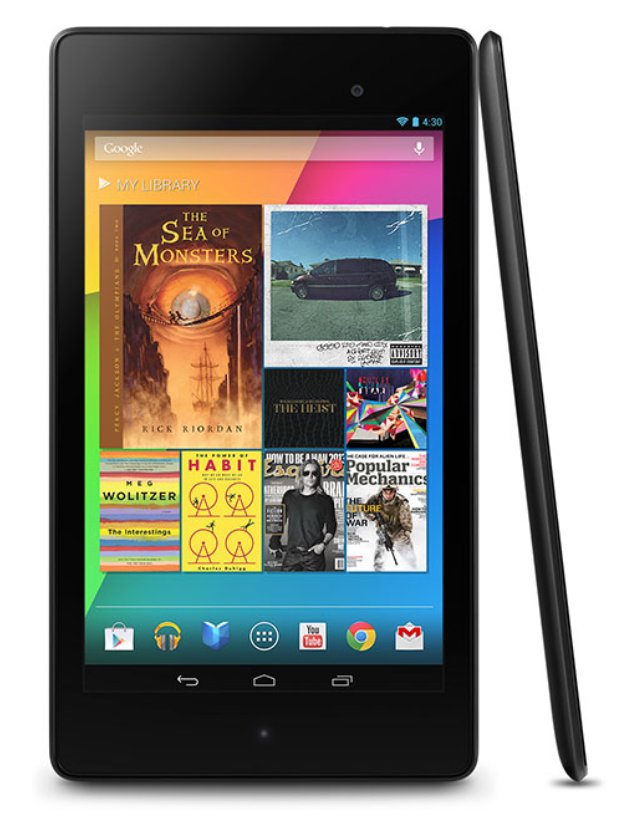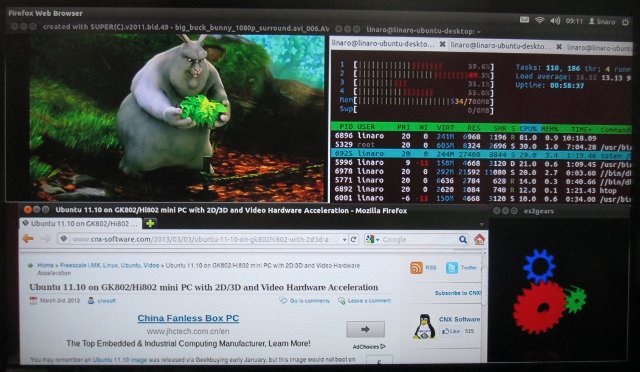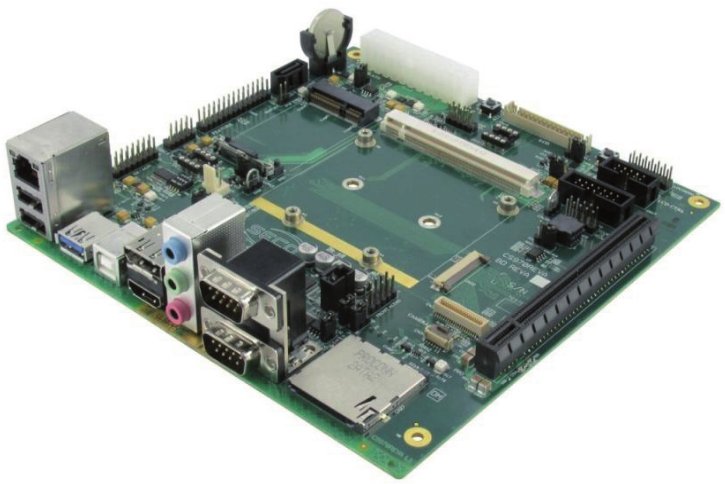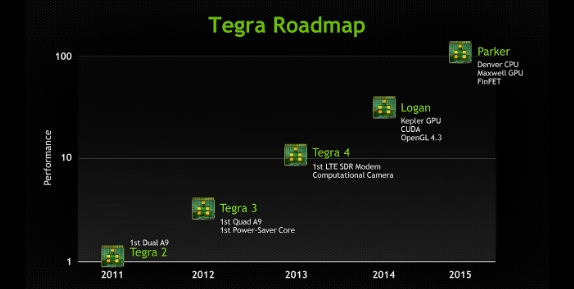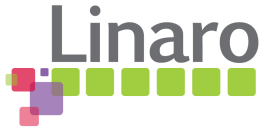The Raspberry Pi was launched 2 years ago, and for its birthday, Broadcom decided to release documentation and open source OpenGL ES 1.1 and 2.0 driver for the Videocore IV GPU. You may remember the Raspberry Pi Foundation already release an open source GPU driver in 2012, but this was only for the part running on the ARM11 core for Broadcom BCM2835 SoC, which is just a few hundred lines of code long, and communicates with a binary blob which does all the work in the GPU itself. This new release however goes much further with a 111 page document entitled “VideoCore IV 3D Architecture Reference Guide“, and open source driver for the 3D System of the GPU. Strangely the release is however not for BCM2835, but instead BCM21553. Broadcom clearly has the source for BCM2835 too, so this must have been made for legal reasons. VideoCoreIV packs a lot […]
Tizen Developer Conference 2013 Presentation Slides, Audio Recording and Videos Are Now Available
The Tizen Developer Conference took place in San Fransisco, on May 22-24, 2013. We’e already seen a few Tizen demos from the conference, but slides and media files (mostly audio, but also some videos) are now available for keynotes and technical presentations. As this was just the second Tizen conference, there were still many sessions dealing with overall structure of the operating system, and explaining how to get started either with native or web development, such as: An Overview of the Tizen Native Application Framework Introduction of Tizen SDK minimal web development tools Tizen Design Guidelines and User Experience Tizen Overview and Architecture Tizen.org Web Infrastructure Tizen enters a mobile world dominated by Android and iOS, so several sessions targeted app developers used to work with either operating systems in order to show them how to port their existing apps to Tizen: Bringing Android Apps to Tizen From iOS to […]
Google Releases Android 4.3 Jelly Bean, Unveils New Nexus 7 Tablet
Yesterday was a big day for Google with several important announcements, including the Chromecast HDMI TV dongle, an updated version of Nexus 7 tablet, and the release of Android 4.3, still codenamed Jelly Bean. In this post, I’ll start with the hardware, and move to explain what’s new with Android 4.3, and where you can download source and images for your device. New Nexus 7 The new Nexus 7 tablet will run Android 4.3 on the following hardware: SoC – Qualcomm Snapdragon S4 quad-core processor @ 1.5GHz with Adreno 320 GPU @ 400MHz System Memory – 2GB RAM Storage – 16GB to 32GB of storage Display – 7″ IPS display (1920 x 1200) Connectivity – Dual band 802.11a/b/g/n WiFi (2.4G/5G), Bluetooth 4.0, and NFC Camera – 5MP rear camera and 1.2MP front camera Video Output – HDMI output (via SlimPort) Audio – Stereo speakers, 3.5mm headphone jack, microphone USB – […]
Preliminary Ubuntu 12.04 RootFS for GK802/HI802 mini PC
After releasing a pretty good Ubuntu 11.10 image with both VPU and GPU acceleration for Freescale i.MX6 based HDMI dongles last month, Jasbir (aka jas-hacks) has released an Ubuntu 12.04 image with GPU support thanks to the help of Octavio (Yocto Project contributor), and Wi-Fi support. It’s possible to select Unity 2D or Xubuntu desktop, and Chromium and Neverball, a 3D ball game, are part of the image. There’s still more work however, as VPU (Video Processing Unit) support is work in progress, Bluetooth does not work yet, and OpenGL ES test programs such as glmark2-es2 or es2gears do not work properly with Xubuntu, even though they do work fine with Unity 2D. Jasbir uploaded a video showing Neverball 3D game in GK802, and it works pretty good, although the framerate does not seem optimal for now. If you want to give this image a try, install GK802 Ubuntu 11.10 […]
Ubuntu 11.10 Image for Hi802 / GK802 is Now Available for Download
About 2 weeks ago, Jasbir released an Ubuntu 11.10 image and installation instructions for GK802 and Hi802 mini PCs based on Freescale i.MX6. I could only find time to give it try yesterday and today. I’ll provide the steps I followed to install the image, and my quick first impressions of the stability and performance of this image. Installation Instructions I mainly followed the instructions provided by Jasbir, and run GParted to increased the partition size on my micro SD card. The image is for a 8 GB micro SD, but those instructions should work on 4GB SD card and greater, as the rootfs partition is only 3GB large. Download the Ubuntu 11.10 image, uboot, as well as the kernel image and modules in a Linux PC:
|
1 2 3 4 |
wget http://dl.miniand.com/jas-hacks/gk802/ubuntu_gk802.img.gz wget http://dl.miniand.com/jas-hacks/gk802/u-boot.imx wget http://dl.miniand.com/jas-hacks/gk802/uImage_3.0.35-0269_cpu_freq wget http://dl.miniand.com/jas-hacks/gk802/modules_3.0.35-02695.tar |
Copy the image, uboot and the kernel to the micro SD card by typing the commands below:
|
1 2 3 4 |
gzip -d ubuntu_gk802.img.gz sudo dd if=ubuntu_gk802.img of=/dev/<sd_device> sudo dd if=u-boot.imx bs=1k seek=1 of=/dev/<sd_device> && sync sudo dd if=uImage_3.0.35-0269_cpu_freq of=/dev/<sd_drive> bs=1048576 seek=1 && sudo sync |
Replace /dev/<sd_device> by your […]
SECO mITX GPU DevKit Features Nvidia Tegra 3, Supports CUDA 5
SECO mITX GPU DEVKIT is a GPU computing development kit that provides a Mini-ITX Qseven 2.0 carrier board (SECO mITX Carrier Board) with a Nvidia Tegra 3 powered Qseven SoM (QuadMo747-X/T30). The carrier board provides a PCI-e x16 connector (PCI Express x4) intended to allow the connection of CUDA 5 enabled desktop graphics boards. Embedded Control Europe reports that the platform will support Nvidia Kayla platform. The main specifications of the platform are as follows: CPU – Nvidia Tegra 3 Quad-Core ARM Cortex A9 GPU – TBD. But you should be able to insert Nvidia graphics card via the PCI-e x16 connector (PCI Express x4) on the mini-ITX board Memory – 2 GB Storage – 4 GB eMMC + 1x SATA 2.0 Connector Network – 1x Gigabit Ethernet USB – 3x USB 2.0 + 1 OTG port Display – HDMI The platform will support Linux Ubuntu , as well as […]
Nvidia Updates its Tegra Roadmap with Parker 64-Bit ARM SoC, Unveils Kayla CUDA Development Platform
Nvidia has given an update about the roadmap for its Tegra processor at the GPU Technology Conference in San Jose, California. Tegra 4 will still be followed by Logan (Tegra 5) as planned with a Kepler GPU and support for CUDA and OpenGL 4.3, but “Stark” has been replaced by “Parker” (Tegra 6) which will be the first 64-Bit Tegra processor based on Denver CPU, Maxwell GPU and make use of Finfet transistors. Logan will be available in 2014, and Parker should be available in 2015 with 100 times more performance than Tegra 2. With this kind of performance, the separation line between desktop and mobile processors will be gone. Nvidia also unveiled Kayla (“Logan’s girlfriend”), a development platform for CUDA and OpenGL based on Tegra 3 quad-core ARM processor and a Kepler GPU connected via a PCI express slot. Jen-Hsun Huang (above) showcased Kayla performance by running real-time ray […]
Linaro Connect Asia 2013 Sessions and Mini-Summits
Linaro Connect Asia 2013 (LCA13) will take place in Hong Kong again this year, on March 4 – 8, 2013 at the Gold Coast Hotel. Linaro recently published the event schedule, with sessions focused on kernel, power management, toolchain, graphics and multimedia, platform, validation, and QA tracks, as well as 2 mini-summits: Linaro Enterprise Group (LEG) which will discuss about ARM server, and an as-yet-unannounced group (Linaro Networking Group?) within Linaro. There will also be hacking sessions each day (except on “Demo Friday”) where you can certainly expect to learn many useful skills/tips. I’ve selected 2 sessions or keynotes per day that I think could be especially interesting. Some of the sessions don’t have description yet, so even if they might seem interesting I’ve usually skipped those. Monday 12:00 – 13:00 – Low Level Virtual Machine (LLVM) Update The Toolchain Working Group started working on LLVM in January 2013. Come […]


